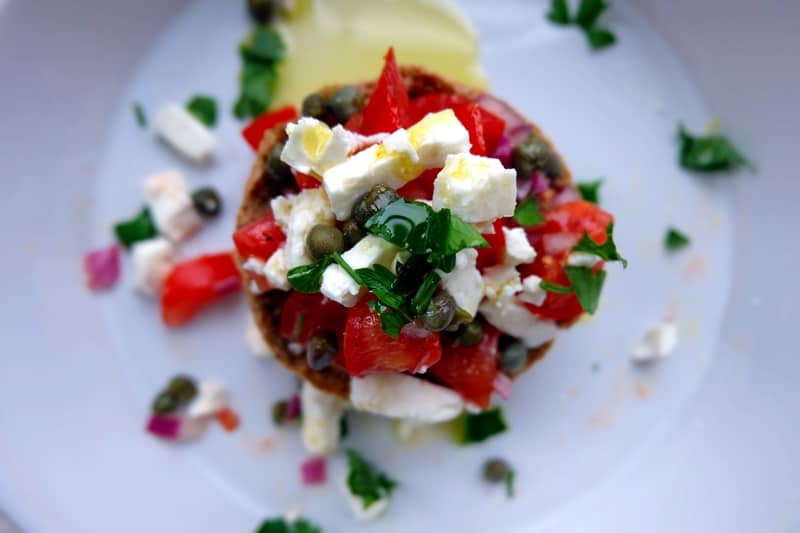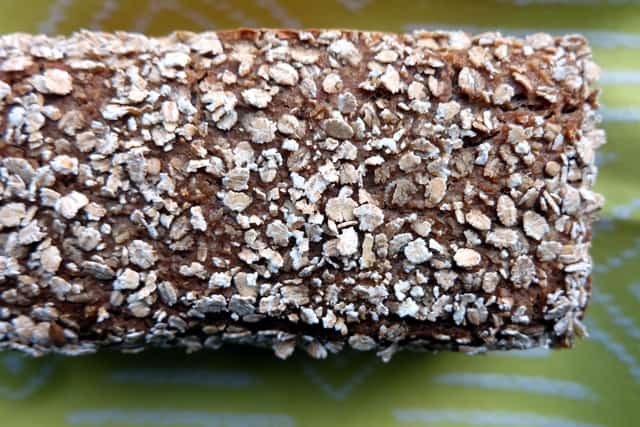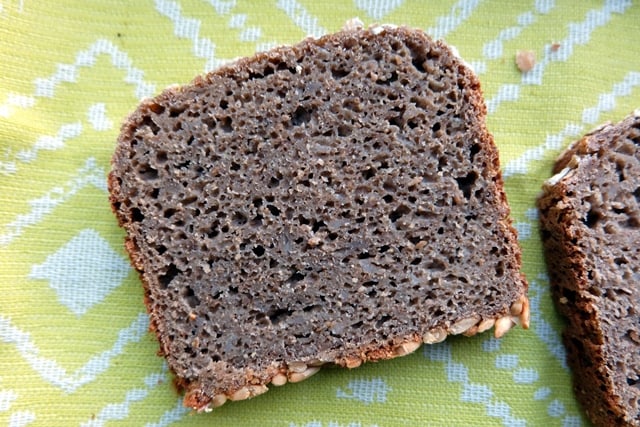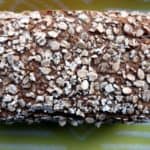Although barley is almost exclusively used in the brewing industry on account of its very low gluten content, barley flour is a really nice ingredient to introduce into bread baking. You’ll have even more reason for using barley if you are looking to keep the glycemic index (GI) of your home-baked bread as low as possible. I’ve been baking with barley flour ever since I came across the delicious barley rusks (used to prepare Dakos) hugely popular on the Greek island of Crete and after lots of research and experimentation I’d like to share my barley flour bread recipe with you.

If you’d like to make Greek barley rusks at home try this recipe which uses 44% barley flour. Firstly though, I want to give you some background on barley flour and the glycemic index GI/ glycemic load GL values of different types of grains.
Barley flour bread is low GI bread
I’ve recently looked into low glycemic bread options as I’ve had to ensure my blood sugar levels were as stable as possible throughout the day for health reasons connected to my pregnancy. Out of all the grains, barley seems to come out on top. It contains a soluble fiber called beta-glucan which has been shown to slow glucose absorption and thought to help lower blood cholesterol.
The table below shows (reasonably) comprehensive information comparing the GI and GL of different grains, flours and one specific brand of bread. Data source: http://www.diogenes-eu.org/GI-Database/Default.htm
“The Glycemic Index (GI) is a relative ranking of carbohydrate in foods according to how they affect blood glucose levels. Carbohydrates with a low GI value are more slowly digested, absorbed and metabolised and cause a lower and slower rise in blood glucose and, therefore usually, insulin levels. Glycemic Load (or GL) combines both the quantity and quality of carbohydrates. It is also the best way to compare blood glucose values of different types and amounts of foods. The formula for calculating the GL of a particular food or meal is: Glycemic Load = GI x Carbohydrate (g) content per portion ÷ 100.” Source: https://www.gisymbol.com/
The Glycemic Index Foundation suggests that a GI of 45 or less is classified as low GI. For GL, 10 or less qualifies as low GL.
From the table below, we can see that only barley is low GI and none of the grains or flours listed qualify as low GL. Nonetheless, barley scores well.
| Food name | GI value | GL |
| Pearl barley raw | 25 | 21 |
| Vogel’s sunflower and barley brown bread | 40 | 16 |
| Porridge Oats | 58 | 20 |
| Crispbread rye | 64 | 45 |
| Bran wheat | 70 | 19 |
| Wheatgerm | 70 | 31 |
| Rye bread | 70 | 32 |
| Wheat flour wholemeal | 70 | 45 |
| Wheat flour brown | 70 | 48 |
| Wheat flour white for breadmaking | 70 | 53 |
| Rye flour whole | 70 | 53 |
| Wheat flour white plain | 70 | 54 |
My barley bread recipe has taken inspiration from the above-mentioned Vogel’s sunflower and barley brown bread, incorporating both wheat and barley flours as well as sunflower seeds.
Barley flour bread recipe (sourdough barley bread)
Opt for barley bread if you are looking for a hearty addition to a low-GI diet.

It is best to use barley flour in conjunction with high-gluten flour. My barley flour recipe uses 50% barley flour and 50% wholewheat flour to ensure the bread rises better. By adding at least 50% wheat flour benefits the crumb. In the interest of flavour and extensibility, I wouldn’t recommend to increase the % of barley flour. The higher the percentage of barley in relation to wheat, the less extensible the dough. I increased the dough hydration as well in order to account for the higher water absorption of the flours.

Barley flour bread recipe
Ingredients
Ingredients
Sourdough Ingredients
- 100 g wheat sourdough starter 100% hydration
- 50 g wholewheat flour
- 50 g water lukewarm
Barley Flake & Sunflower Seed Soaker Ingredients
- 50 g barley flakes
- 50 g sunflower seeds
- 100 g hot water
Main Dough Ingredients
- 250 g wholewheat flour
- 250 g barley flour
- 10 g salt
- 320 g water lukewarm
- 100 g natural yoghurt
Toppings
- 1 handful of sunflower seeds
- 1 handful of barley flakes
Instructions
How to make barley flour sourdough bread
Day 1 – Refresh your sourdough starter & prepare the soaker
- For the sourdough –
In a medium bowl, combine all the sourdough ingredients, cover with a lid and keep at room temperature until the next day. - For the soaker –
Toast the barley flakes and sunflower seeds in a frying pan (no oil) to release the nutty flavours, then take off the heat, add the boiling water and cover immediately. Set aside at room temperature.
Day 2 (about 24 hours later) – Prepare the main dough, proof & bake
- Combine 100g of the refreshed sourdough (the rest goes back into the fridge for future bakes) with all the remaining ingredients (the soaker you prepared the day before and all of the main dough ingredients) and knead for about 10 mins. The dough will be sticky yet pliable.
- Leave the dough to rest for about an hour.
- Oil a bread baking tin and distribute a handful of sunflower seeds across the bottom of the tin, covering the surface evenly.
- Transfer the dough into the oiled and seeded bread baking tin, evenly distribute the barley flakes across the top of the dough and cover with a lid or a polythene bag to keep the moisture in.
- Rest until fully proofed (this takes a good 4 hours in my cool kitchen) and preheat the oven to 220°C in time.
- Bake at 220°C for 10 mins, and at 200°C for a further 40 mins.
- Leave to cool on a wire rack.
